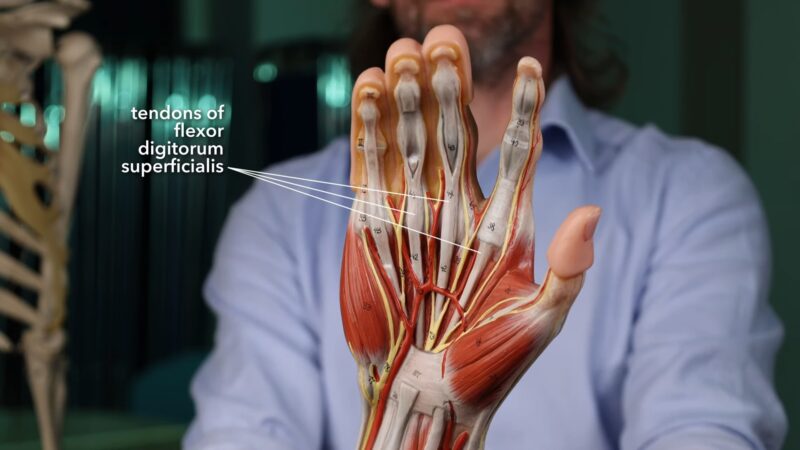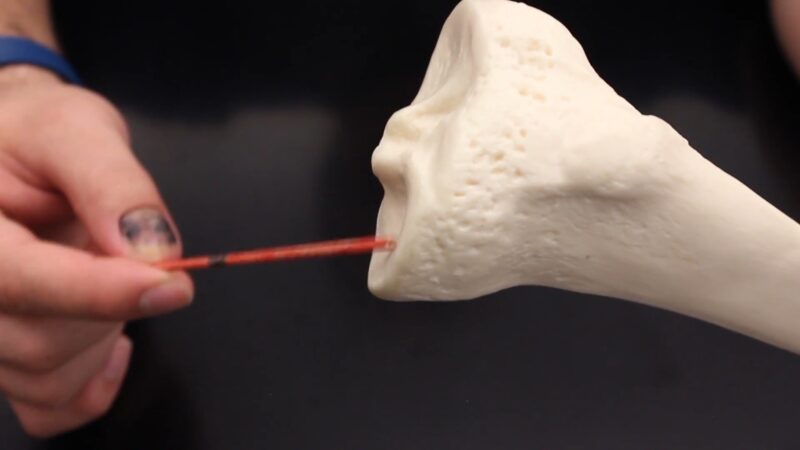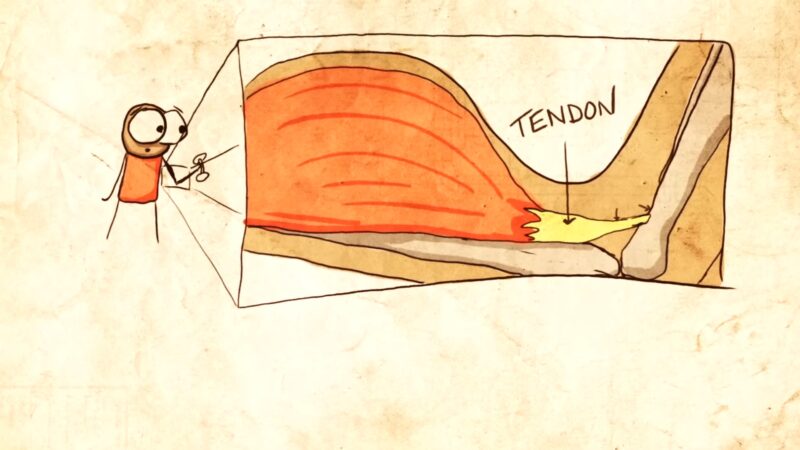The human body is a marvel of nature, a complex machine made up of numerous parts that work in harmony. While some body parts are well-known and often discussed, others remain under the radar despite their crucial roles.
Today, we delve deep into a body part that begins with the letter “T” – the tendon. Join us on this journey as we unravel the mysteries of the tendon, its functions, and its significance in our daily lives.
Tendons are fibrous connective tissues that connect muscles to bones. They play a pivotal role in facilitating movement, transmitting the force of muscle contractions to the bones.
Without tendons, our muscles would be rendered useless, unable to bring about any movement in the body. Tendons are composed of collagen, a protein that provides them with strength and flexibility.
They are white, shiny, and have a rope-like appearance. Tendons vary in size and shape, depending on their location and the muscles they serve.
Anatomy of a Tendon
The structure of a tendon is intricate and designed for optimal function. At a microscopic level, tendons are made up of small fibers called fibrils. These fibrils group together to form larger units known as fascicles.
Fascicles are bound together by a connective tissue sheath, giving the tendon its characteristic shape and strength. This organized structure ensures that tendons can withstand the tremendous forces exerted by muscles during activities like running, jumping, and lifting.
Functions
Tendons are not just passive ropes connecting muscles to bones; they have several vital functions that ensure our body moves efficiently and safely. Their primary role is to transmit the force generated by muscle contractions to the bones, enabling movement.
- Stability: Tendons stabilize joints, ensuring that they move within their natural range and preventing dislocations.
- Efficiency: They store and release energy like a spring, especially in activities that require quick and explosive movements, such as sprinting or jumping.
Injuries and Their Impact
Tendons, despite their strength, are susceptible to injuries. Overuse, sudden movements, or lack of flexibility can lead to tendonitis (inflammation of the tendon) or even ruptures.
Tendon injuries can be debilitating, often requiring rest and rehabilitation. In severe cases, surgical intervention might be necessary. It’s essential to listen to our bodies and seek medical advice if we experience persistent pain or discomfort in areas where tendons are located.
Tendons in the Hand

The hand is a complex structure with numerous tendons that enable a wide range of movements. From gripping objects to playing musical instruments, the tendons in our hands are constantly at work.
The tendons in the hand are categorized into two main groups:
- Flexor Tendons: Located on the palm side of the hand, these tendons help in bending the fingers.
- Extensor Tendons: Situated on the back of the hand, they assist in straightening the fingers.
Role of Tendons in Fine Motor Skills
Fine motor skills involve the coordination of small muscle movements, primarily in the hands and fingers, with the eyes. These skills are essential for tasks like writing, buttoning a shirt, or threading a needle.
Tendons play a crucial role in these activities by ensuring precise movement and dexterity. Any injury or ailment affecting the tendons can significantly impair our ability to perform tasks that require fine motor skills, emphasizing the importance of tendon health.
Body Parts Starting with ‘T’

| Body Part | Description |
|---|---|
| Tendon | Fibrous connective tissue that connects muscles to bones, enabling movement. |
| Tibia | The larger of the two bones in the lower leg is commonly referred to as the shinbone. |
| Trachea | The windpipe; is a tube that connects the pharynx and larynx to the lungs, allowing air to flow. |
| Tarsals | A group of seven bones in the foot, situated between the lower leg and the metatarsals. |
| Temporal Lobe | Part of the brain is responsible for processing auditory information and plays a role in memory. |
| Tonsils | Lymphoid tissues located in the back of the throat help in filtering out bacteria and viruses. |
| Tympanic Membrane | Also known as the eardrum; a thin membrane that separates the outer ear from the middle ear and vibrates in response to sound waves. |
| Tongue | A muscular organ in the mouth that aids in tasting, swallowing, and speech. It can be hurt by eating spicy food or doing something foolish like eating dry ice. |
| Toes | The digits of the foot, are crucial for balance and mobility. |
| Thyroid | A gland in the neck that produces hormones regulating metabolism and growth. |
| Thymus | A gland located behind the sternum that plays a role in the immune system, especially during early life. |
| Thorax | The part of the body between the neck and the abdomen, containing the heart and lungs. |
FAQ
What is the difference between tendons and ligaments?
While both tendons and ligaments are connective tissues, tendons connect muscles to bones, facilitating movement. In contrast, ligaments connect bones to other bones, providing joint stability.
How can I keep my tendons healthy?
Maintaining tendon health involves regular exercise, stretching, staying hydrated, and ensuring a balanced diet rich in collagen-boosting nutrients like vitamin C, manganese, and copper.
Are there any common diseases associated with the thyroid?
Yes, some common thyroid-related diseases include hypothyroidism, hyperthyroidism, and thyroid nodules. It’s essential to consult a doctor if you experience symptoms like fatigue, weight changes, or neck swelling.
How does the thymus change as we age?
The thymus is most active during childhood and adolescence, producing T-cells vital for the immune system. As we age, the thymus gradually shrinks and gets replaced by fatty tissue, reducing its functionality.
Why is the trachea rigid?
The trachea, or windpipe, has C-shaped rings made of cartilage that give it rigidity. This structure ensures the trachea remains open, allowing for efficient airflow to and from the lungs.
Final Words
The human body is a marvel, with each part playing a unique and essential role. While some parts like the tendon, thyroid, or trachea might not always be in the limelight, their significance cannot be understated.
By understanding these parts and their functions, we not only gain knowledge but also a deeper appreciation for the intricate design of our bodies. Stay curious, and never stop exploring the wonders within you.
